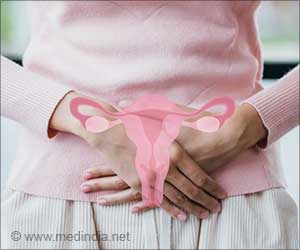More than 500,000 women die each year worldwide due to complications arising from pregnancy and childbirth.
More than 500,000 women die each year worldwide due to complications arising from pregnancy and childbirth. Half of these women live in sub-Saharan Africa. A research team from the King Juan Carlos University (URJC) in Madrid says these women are not dying as a result of any illness, but rather from a lack of basic healthcare measures.
"Maternal mortality is a good indicator of a country's healthcare situation and of the inequalities between men and women", José Luis Álvarez, the lead author of this study and a researcher at the URCJ in Madrid, tells SINC.The objective of this research, published in the journal BMC Public Health was to quantify the specific weight of maternal mortality in sub-Saharan African and to determine the healthcare, cultural and economic factors involved in this.
Data obtained from 45 African countries between 1997 and 2006 from the World Health Organization (WHO), the World Bank, the United Nations Children's Fund (UNICEF) and the United Nations Development Programme (UNDP) were studied.
"Despite the significant differences between countries, the number of maternal deaths was high in all of them, at an average of 885 deaths for each 100,000 births, but these women are not dying as a result of any disease, but just from normal biological processes", says Álvarez.
The main causes of death are haemorrhaging (34%), infection (10%), pre-eclampsia (9%) and obstruction during birth (4%). These figures differ from those in industrialised countries, where death from haemorrhaging accounts for 13% of deaths. There are also indirect causes that, although they are not complications relating to the birth itself, become worse over the course of the pregnancy and cause 20% of the deaths.
The results of this study show that an effective and efficient health system, especially during pregnancy and birth, are fundamental cornerstones of maternal health, along with access to clean drinking water.
Advertisement
Maternal mortality around the world
Advertisement
The main reasons why pregnant women do not attend health centres to receive maternal-infant care, especially in rural areas, are the cost, fear, having previously received poor treatment, the waiting times, shame and the distance to the closest health centre.
According to the United Nations, the three countries with the highest maternal death rates are India (136,000), Nigeria (37,000) and Afghanistan (20,000). The highest maternal mortality rates are in Sierra Leone and Afghanistan, with 2,000 and 1,900 maternal deaths for every 100,000 live births, respectively. The lowest rates are in Australia and Iceland, at four and 10, respectively.
In 2003, the WHO, UNICEF and the United Nations Population Fund (UNFPA) produced the world maternal mortality index. The average in Africa is 400 deaths for every 100,000 live births, in industrialised countries 20 per 100,000, and in developing countries 440 per 100,000.
Source-Eurekalert
TAN











